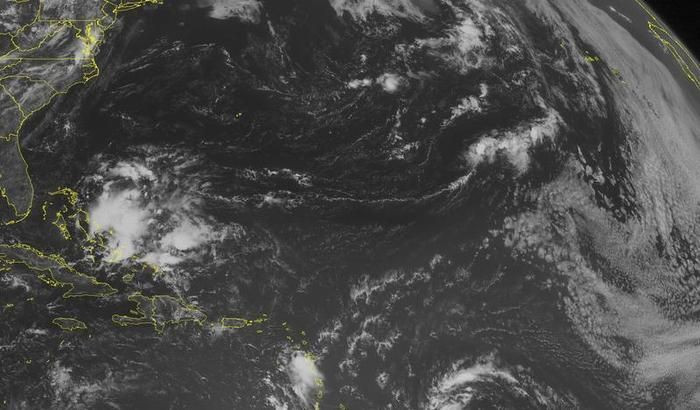
The fourth official storm of the 2013 Atlantic Hurricane Season continues to develop in the eastern Atlantic Ocean.
Approximately 700 miles west of the Cape Verde Islands - off the coast of West Africa - Weather.com indicates that Tropical Storm Dorian was originally designated as 'Tropical Depression Four' but after strengthening early Wednesday morning, the storm was moved into the Tropical Storm classification.
RELATED: Aaron Hernandez Fingerprints Found On Ammunition; Probable Cause Hearing Moved To August 22
Dorian is expected to move west-northwest over the next several days along the south portion of the Bermuda-Azores high and is also likely to remain over open waters for most of the upcoming weekend. Moving at a speed of 17 mph, there is currently no threat of the storm reaching land although that could change in the coming days as the storm continues to build.
Multiple NOAA storm tracker models come to a general agreement that the storm's projected path will remain west or west-northwest heading into Monday, July 29. There is also the possibility that Tropical Storm Dorian could move north of Puerto Rico and the Dominican Republic in the direction of the Bahamas by Monday if its current path holds form.
RELATED: Tim Duncan Divorce Reason? Wife Amy Duncan Allegedly Cheated On NBA Star With His Trainer
With maximum sustained winds of 50 miles per hour, Dorian can not be classified as a Hurricane until it reaches wind speeds of 74 mph.
While storms forming this far out in the Atlantic are typically unpredictable, Eric Berger of the Houston Chronicle notes that the storm may pose a threat to Florida in the coming days as well as the East Coast of the United States if it continues to follow the projected path.
There's a fair amount of uncertainty in intensity forecasting, but the bottom line is that conditions are not overly favorable for hurricane development during the next five days.
Typically westward moving storms begin to curve to the northwest as they approach the United States, so the long term track suggests Dorian, if it holds together, may begin to pose a threat to Florida in about one week's time, or perhaps the U.S. East Coast a little bit after that.
However those of you who follow storms recognize there's a lot of uncertainty in storm track forecasts after about five days time, so the final fate of Dorian remains in question.
RELATED: George H.W. Bush Shaves Head To Support 2-Year-Old Cancer Patient [PHOTOS]
Those living in areas that could be affected by the continuing Atlantic Hurricane Season are encouraged to continue storm safety preparation.
For more information on how to stay safe and fully prepare for impending storms, visit the National Hurricane Center website.
WATCH MORE on Development of Tropical Storm Dorian
© 2025 Latin Times. All rights reserved. Do not reproduce without permission.




